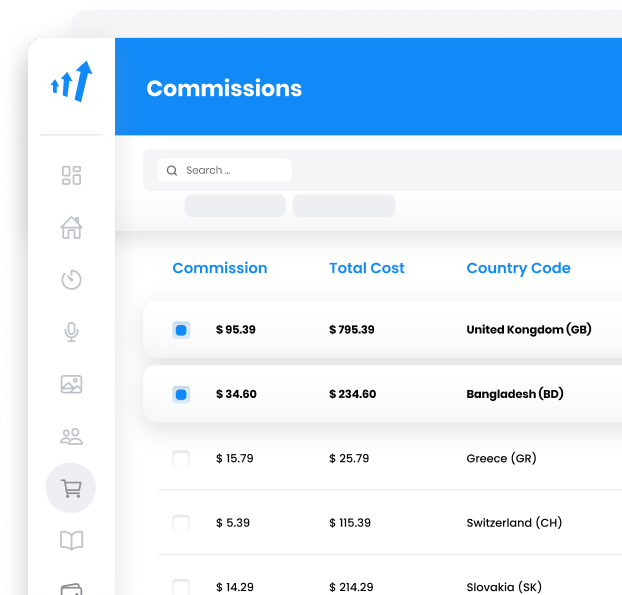What is blacklist?
In affiliate marketing, a blacklist is an essential tool designed to safeguard the integrity of affiliate programs by identifying and excluding entities that engage in fraudulent activities or violate policy guidelines. This list includes affiliates, advertisers, products, or promotional methods deemed detrimental due to poor performance or non-compliance. The primary goal of maintaining a blacklist is to ensure that the affiliate network remains secure, trustworthy, and efficient by filtering out undesirable elements that could harm the program’s overall quality.

Significance in Affiliate Marketing
Blacklists play a pivotal role in the realm of affiliate marketing by serving as a mechanism for compliance enforcement and quality assurance. They enable marketers to streamline campaigns by focusing only on reliable and profitable traffic sources while eliminating those that underperform or breach policies. By doing so, affiliate marketers enhance the quality of their campaigns, protect their reputation, and maximize return on investment (ROI). This strategic filtration process is vital for maintaining the credibility and effectiveness of marketing efforts in the competitive digital landscape.
How Blacklists Function
In practice, blacklists function by blocking specific traffic sources that fail to meet established performance criteria or are suspected of fraudulent behavior. This includes:
- Traffic Sources: Identifying publishers, websites, or networks that do not convert effectively or engage in suspicious activities.
- IPs and Domains: Monitoring and restricting IP addresses or domains that generate invalid or low-quality traffic.
- Promotional Methods: Prohibiting techniques or strategies that violate program policies or conflict with the brand’s values.
The blacklisting process involves continuous monitoring of traffic sources, assessment of their performance, and regular updates to the blacklist to ensure only high-quality interactions with the campaigns.
Setting Up a Blacklist
- Identify Criteria: Clearly define the parameters for what constitutes blacklist-worthy behavior, such as low conversion rates, suspicious traffic patterns, or policy violations.
- Monitor Performance: Utilize robust analytics and tracking tools to evaluate the performance of various traffic sources.
- Update Regularly: Ensure the blacklist is regularly updated to reflect the latest performance data and trends.
- Automate Processes: Implement automated systems to streamline the blacklisting process, minimize manual intervention, and enhance operational efficiency.
Strategies and Best Practices
Effective blacklist management in affiliate marketing involves several key strategies:
- Automated Monitoring: Deploy automated tools that flag and blacklist sources based on predefined criteria to enhance efficiency and accuracy.
- Regular Audits: Conduct periodic audits of traffic sources and blacklist entries to ensure their continued relevance and effectiveness.
- Clear Communication: Maintain transparent communication with affiliates regarding blacklisting policies to prevent unintentional violations and foster trust.
- Appeals Process: Establish a fair and transparent process for entities to contest their inclusion on the blacklist if they believe it to be unwarranted.
Blacklists vs Whitelists
While blacklists focus on excluding undesirable entities, whitelists operate on the principle of inclusion, featuring only pre-approved and reliable sources. Whitelists ensure that only vetted traffic sources contribute to a campaign, often enhancing quality at the potential cost of growth opportunities. In contrast, blacklists offer a reactive approach, allowing marketers to exclude problematic sources while remaining open to new opportunities.
Impact on Campaign Performance
Strategically utilizing blacklists can significantly enhance campaign performance by:
- Improving ROI: Concentrating resources on high-quality traffic sources leads to better conversion rates and a higher return on investment.
- Enhancing Brand Safety: Ensuring ads do not appear on inappropriate or harmful sites preserves brand reputation.
- Streamlining Efforts: Reducing the impact of low-quality traffic allows marketers to focus on optimizing profitable sources.
Challenges in Implementing Blacklists
Despite their benefits, implementing blacklists presents certain challenges:
- False Positives: The risk of mistakenly blacklisting legitimate sources can impede potential business opportunities.
- Complex Management: Managing blacklists across multiple platforms can be cumbersome without centralized systems and tools.
- Legal Concerns: It is crucial to ensure the blacklist process is fair, transparent, and compliant with legal standards to avoid potential legal issues.
Tools and Resources
Effective blacklist management necessitates a combination of sophisticated tools and resources:
- Fraud Detection Software: Utilized to automatically identify and flag suspicious activities, ensuring only high-quality traffic.
- CRM Systems: Essential for tracking affiliate histories and managing relationships effectively.
- Industry Databases: Access to shared industry databases of known fraudulent entities can enhance blacklist accuracy and reliability.
Future Trends
The integration of AI and machine learning is set to revolutionize blacklist management by providing real-time insights and adaptive strategies to counteract fraudulent activities. Collaborative industry-wide blacklists may emerge, offering a collective defense against sophisticated fraud networks. As privacy regulations evolve, new methods of sharing blacklist data while complying with data protection laws will be developed, ensuring the system remains robust and effective.

Frequently Asked Questions
What is an example of a blacklist?
A blacklist is a database of email addresses, IPs, or domains that are considered dangerous or illegitimate.
What happens if you get on a blacklist?
Depending on the context, being on a blacklist could mean that a person or organization is barred from some kind of activity, or that they are considered to be untrustworthy.
Explore Post Affiliate Pro's comprehensive Affiliate Marketing Glossary to enhance your industry knowledge with easy-to-understand definitions of essential terms. Perfect for marketers seeking to understand the fundamentals and advanced concepts, this glossary helps you master the language of affiliate marketing. Visit now to boost your expertise!
Discover what a search term is—a key concept in marketing that involves the text users type into search engines. Learn how to optimize your business keywords to ensure your ads appear in relevant searches, and find out how to use search term reports to track popular keywords. Explore strategies for adding or blacklisting keywords to refine your ad visibility effectively.
Discover the role of an affiliate in marketing—earn commissions by promoting products through banners, links, and campaigns. Learn how affiliates drive sales and explore effective marketing strategies. Join the world of affiliate marketing with Post Affiliate Pro for user-friendly tools and exceptional support.










